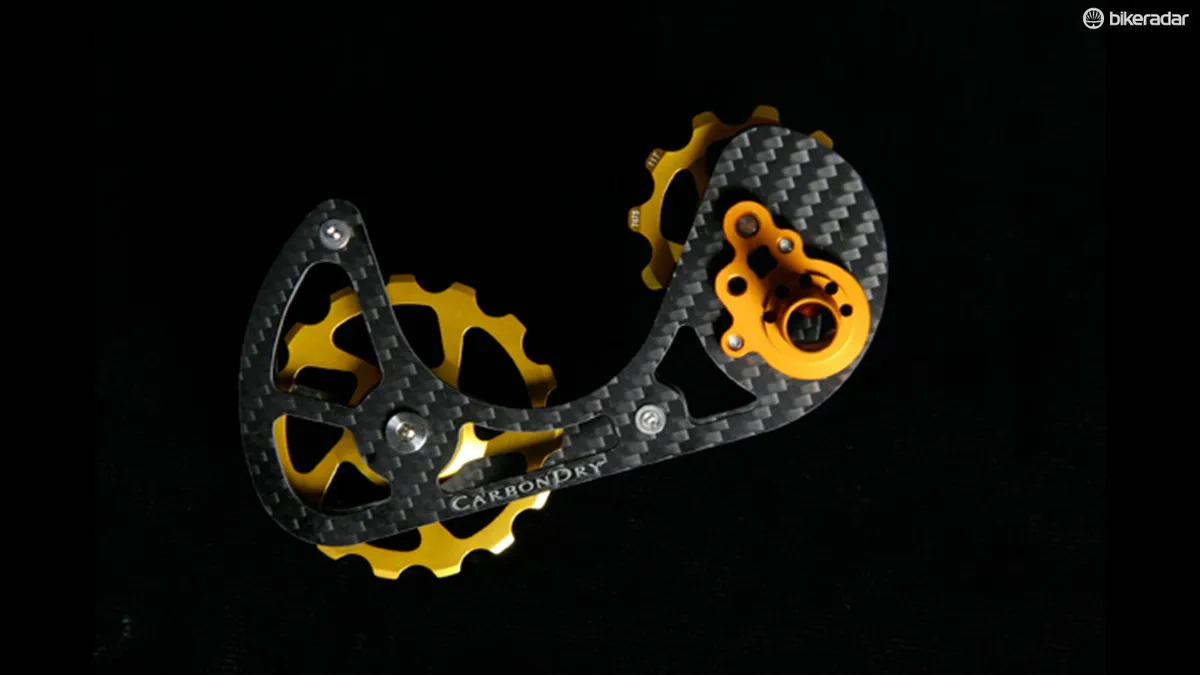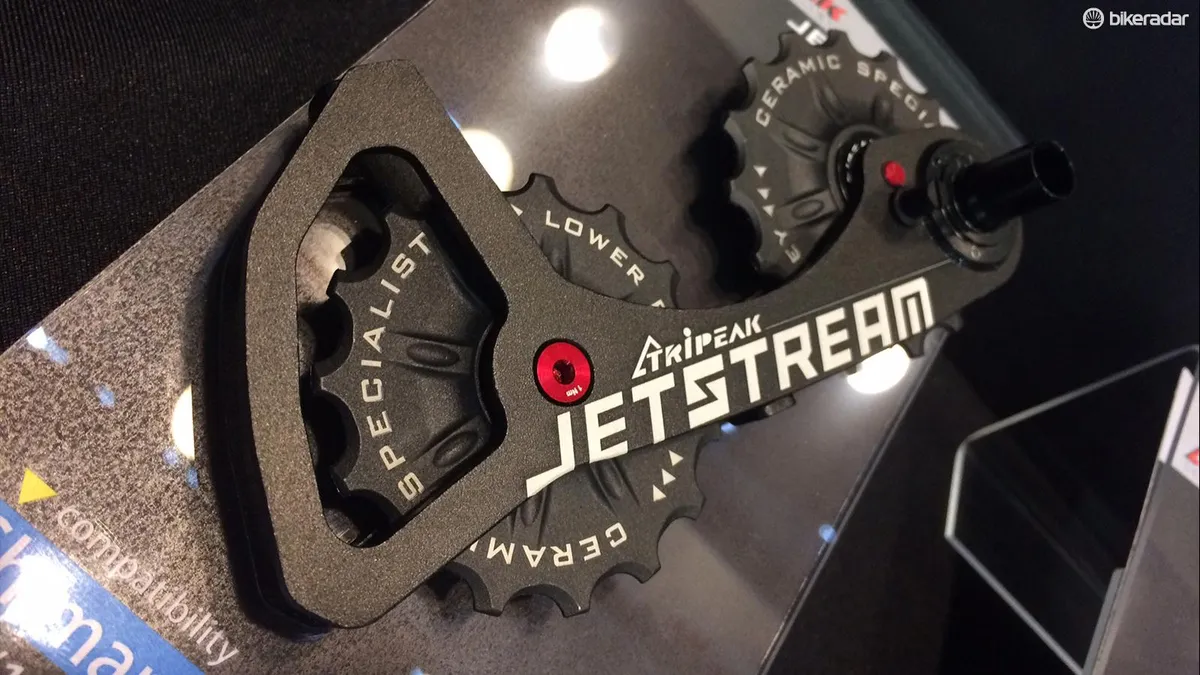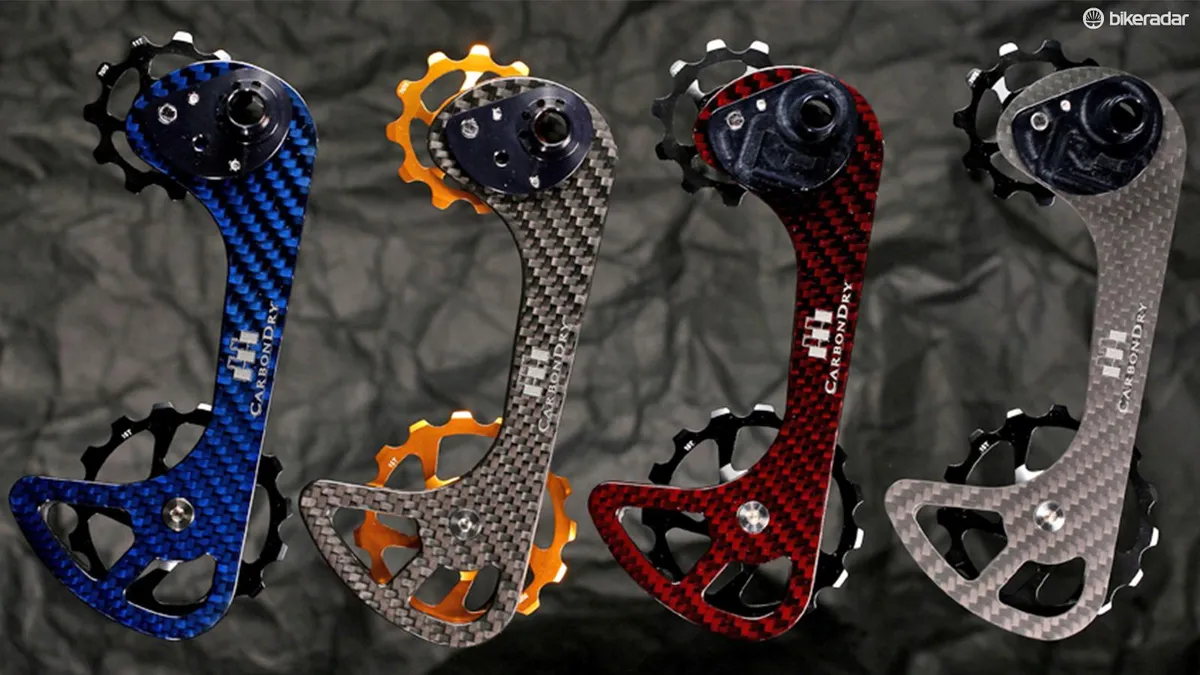CeramicSpeed isn’t the only company cashing in on riders’ desire for friction-fighting aftermarket upgrades. At the Taipei Show there were several companies touting the ability of their oversized derailleur pulleys to reduce drivetrain friction.
- CeramicSpeed unveils the world’s most expensive derailleur upgrade
- Friction Facts: free speed from proper shifting
Carbondry covers all major road drivetrains

Japanese manufacturer Carbondry offers a carbon fiber rear derailleur cage that uses a traditionally sized 11-tooth alloy upper wheel in order to maximize shift performance with a lower wheel that has 15 teeth. Both spin on ceramic bearings.
The company makes versions of its carbon derailleur cage upgrade in short and medium lengths for Shimano, SRAM and Campagnolo. Claimed wattage savings vary by model as well as chainring combination, but the average claimed wattage savings are between 2–5 watts.
A currency conversion from the Japanese Yen puts these upgraded cages at £172 / $215 / AU$285.
Visit www.carbondryjapan.com for more information.
Tripeak Jetstream in carbon and alloy versions

Next up on the show floor is Tripeak’s Jetstream derailleur cage. Like Carbondry, this Taiwanese manufacturer also uses an 11-tooth upper pulley with a 15-tooth lower wheel.
Contrast these designs with CeramicSpeed’s pair of massive 17t derailleur pulleys. Tripeak makes versions of the Jetstream for Shimano and SRAM with carbon and alloy cages, both of which rely on ceramic bearings.
The carbon caged Jetstream will set buyers back £399 / $499 / AU$650.
The alloy Jetstream is more palatable at £215 / $268 / AU$350.
Visit www.tripeakbearing.com for more information.
Aftermarket only (for now)
The growing number of big-wheeled derailleur add-ons begs the question: how long until larger derailleur pulleys become standard fare on production equipment from major drivetrain manufacturers?

